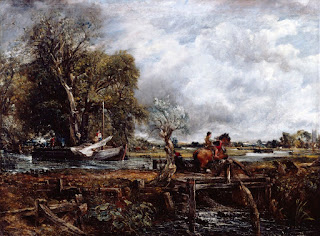A new collection of essays on this theme is being published:
John Ruskin, whose bicentenary will be celebrated in 2019, was not only an art historian, cultural critic and political theorist, but also, above all, a great educator. He was the inspiration behind William Morris, Leo Tolstoy, Marcel Proust and Mahatma Gandhi, and his influence can be felt increasingly in every sphere of education today, for example, in debates about the importance of creativity, grammar schools and social mobility, Further Education, the crucial social role of libraries, environmental issues, the role of crafts as well as academic learning, the importance of fantasy literature and the education of women. Though Ruskin was a great believer in ‘Separate Spheres’, he also championed wider learning opportunities for girls. ‘John Ruskin and Nineteenth-Century Education‘ brings together ten top international Ruskin scholars to explore what he actually said about education in his many-faceted writings, and points to some of the key educational issues raised by his work, concluding with a powerful rereading of his ecological writing and his apocalyptic vision of the earth’s future. Edited by Valerie Purton, this volume is dedicated to Dinah Birch, a much-loved Victorian specialist and authority on Ruskin, and makes a fresh and significant contribution to Victorian studies in the twenty-first century.
To declare an interest, this volume contains an essay by me, 'Mad Governess or Wise Counsellor?' on the context and contents of Ruskin's (in)famous text Sesame and Lilies. Here below is the opening :
This chapter begins, unusually
for me, with an autobiographical anecdote that concerns my old school. Some little while ago I was invited to the
annual Founder’s Day, and as the invitation was insistent, I duly presented at 10.00am in the school
hall, to find a seat with my name on it. Much of the programme was familiar, a
rather uncanny sensation after so many years, but then members of the upper
sixth performed a drama written by themselves, which enacted episodes from the
story of the Pre-Raphaelite Brotherhood, involving John Everett Millais, Dante
Gabriel Rossetti, Elizabeth Siddal, John Ruskin et al. I knew then why I
had been invited, as an alumna who has written extensively about this group and
their art. Being a connoisseur of dramatisations and re-tellings of the
PRB’s now near-legendary events, I enjoyed the somewhat tongue-in-cheek
presentation by these stylish young women.
More followed, in the
speech by the head teacher. I recalled that in my day the head was a historian
and annually pulled out of the past some aspect of the school’s founding – by none
other than the redoubtable Frances Mary Buss, this being North London
Collegiate School and she being immortalised alongside Dorothea Beale, the
formidable founder of Cheltenham Ladies College:
Miss Buss and Miss Beale
Cupid’s darts do not feel;
How different from us,
Miss Beale and Miss Buss.
On this latest Founder’s
Day at NLCS the historical theme was art. Frances Buss’s father was an unsuccessful painter who taught drawing at
her new school, opened in 1850,and through whom she had artistic acquaintance.
In the school archive is the record of a visit by Millais, who happened upon a
student practising the harp, and also a letter to school governor Annie Ridley
from John Ruskin, in which he wrote: ‘I am much interested in what you tell me of
the school and of the feelings with which it has been founded’, adding, ‘I
might perhaps be able to come and see what you are doing and to hear how I
could promote it.’
This was intriguing to
hear, because the school’s founding principles were that girls’ education
should be as intellectually rigorous as that of their brothers, should include public
examinations and in due course preparation for university, and should also
involve regular physical exercise.
Whereas Ruskin, as has always been assumed, promoted gender difference
in education, ‘Sesame’ meaning classical
and scientific learning for a boy, ‘Lilies’, sympathy and service to others for
a girl:
All such knowledge …as may enable her to understand and even to
aid, the work of men … yet not as knowledge, not as if it were for her an
object to know, but only to feel and judge….
And
Solemnly she is to be taught to strive that her thoughts of pity be
not … feeble … nor her prayer …languid … for the relief from pain or her husband
or child [or] when it is uttered for the multitudes who have none to love them
– and is “for all who are desolate and oppressed”
So what brought these two views into potential collaboration?





















